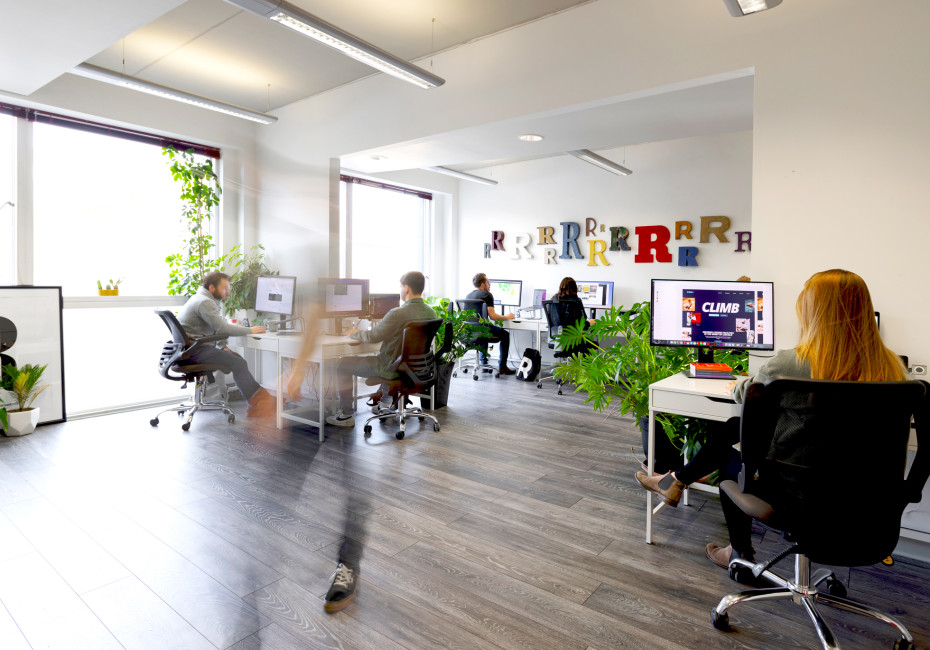Related services
In the fast-paced world of design, the pressure to deliver exceptional results under tight deadlines can be overwhelming. But does an overly-ambitious schedule really save time in the long run or does it just lead to problems down the line?
All too often, we've seen clients (and other creatives) race into projects, bypassing essential planning and diving straight into the first idea that comes to mind. The result? A project lacking in strategy, a half-baked idea and rushed execution, all in the name of saving time.
In this article, we'll explain why patience and consideration during the design process is not just beneficial but often essential to achieving a quality outcome and the very best ROI. So, let's slow down and uncover the true value of investing time in your projects.
The case for taking your time
Rushing through the design process can seem like a shortcut to the finish line. After all, the client has deadlines to meet and the designer often lives to please. However, it's important to understand that this approach carries its own set of challenges. Let's look at why a more restrictive schedule can sometimes be a recipe for disaster:
Less time = less research & planning
Effective design begins with a thorough understanding of the project's goals and challenges. Time spent on research, customer profiling and competitive analysis is an investment in the success of your design.
Missed opportunities for innovation
In an effort to meet deadlines, innovation often takes a back seat. You may miss out on the chance to explore unique and groundbreaking design ideas that could set your project apart from the competition.
Poor customer experience
Design is not just about aesthetics; it's about creating a meaningful and engaging experience for your target audience. Rushing through the process can lead to a poorer customer experience, which may alienate your audience and damage your brand's reputation. By comparison, patience and dedication result in higher-quality, more refined and ultimately more meaningful designs. Your work stands a better chance of leaving a lasting impression.
Poor results & minimal ROI
The harsh truth is that less considered designs are more likely to underperform. Whether it's lower conversion rates, poor engagement or a failure to communicate your message effectively, the consequences can be significant.

So where do we need to spend more time?
Great design is achieved through following a series of phases, each requiring time and devotion. We've broken down these key phases for you below:
1. Understanding the Brief:
Before you dive into design, it's essential to grasp the project's goals, problems and scope.
2. Research:
Invest time in researching your audience, industry and competition. This knowledge is the foundation of effective design.
3. Planning:
Creating a detailed plan, including scheduling, sitemaps, wireframes, user flows, brand audits and strategies, sets the stage for success.
4. Generating Ideas:
Give your creativity room to breathe. The best ideas often require time to mature.
5. Refinement:
Iterate on your design, refining and enhancing it until it reaches its full potential.
6. Prototyping:
Prototyping allows you to test and refine your concepts before fully committing to them. Take your ideas through a structured process, exploring their potential and refining them into viable solutions.
7. Feedback:
Feedback is crucial. Allow time for it and be willing to revisit and improve the design accordingly.
8. Testing:
Testing ensures that your design works as intended and offers a seamless user experience.
9. Prepping:
Before launch, dedicate time to things like developer hand-offs, printer briefings, brand guideline creation and comprehensive launch strategies.
10. Delivery:
Whether it's development, printing or copywriting, allocate time for the execution of your design.
11. Launch:
A well-planned and executed launch can make all the difference. A design can be as stunning as you like but if it doesn't reach the right audience, in the right ways and in the right spaces then it'll fall flat.

What can you do to avoid rushing a project?
If you're looking to avoid these pitfalls, consider these practical steps:
Brief your design team early
The earlier you involve your design team, the better. If there's a predetermined launch date for an event, plan well-ahead to ensure ample time for a comprehensive design process.
Ask your designer to scope out the project
A clear project scope is really important. If you're not sure how to go about doing this yourself then ask your designer to help define the project's objectives, challenges and strategies before diving into the concept phase.
Create a detailed schedule
Build a schedule that allows for ample time for planning, research, design, iteration and testing. A well-planned timeline is your best defence against a looming deadline.
In conclusion
The true value of taking your time becomes evident when you witness the success of your work. Much like how slow fashion is steadily replacing the fast fashion trends of previous years, prioritising quality over speed is not just a recommendation; it's a path to exceptional and responsible design as well as satisfied and loyal clients. So our advice is to slow down, embrace the creative journey and allow the results to speak for themselves.
At Root Studio, we have a number of tried and tested processes in place for our clients' projects that enable us to seamlessly run through each of the important design phases above. Our experience also allows us to gauge early on, how long a project might take to deliver properly and identify any detrimental deadlines from the off. We set honest and achievable milestones that ensure the success of each and every project and allow all parties to feel in tune with progress and prepared for launch.
If you have a project in the pipeline that you'd like to discuss then get in touch.
For more news follow us @rootstudiouk
Similar posts

In a world crammed with endless scrolling, pop-ups, flashing offers and ‘read more’ rabbit holes, the real competition isn’t just other businesses - it’s cognitive overload.

Most websites don’t have a traffic problem - they have a conversion problem. Conversion Rate Optimisation (CRO) is simply about spotting issues and opportunities and gently guiding more of your visitors to take action.

